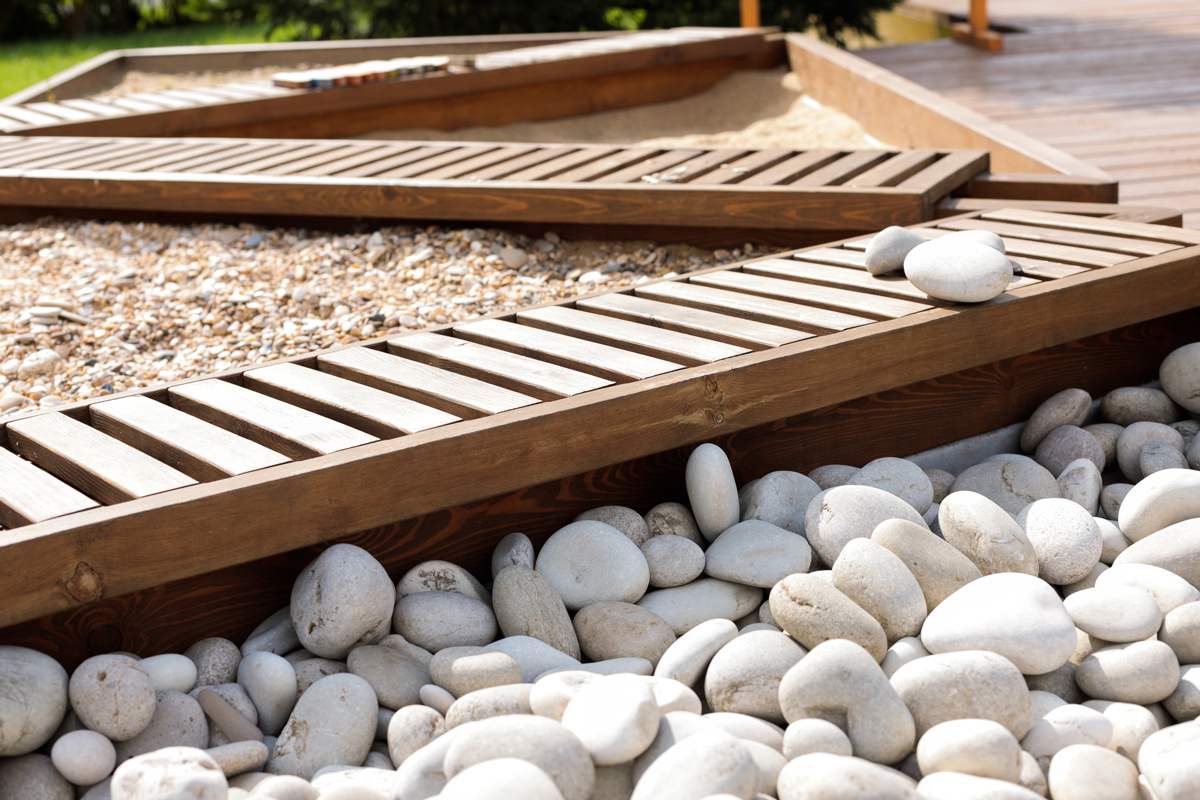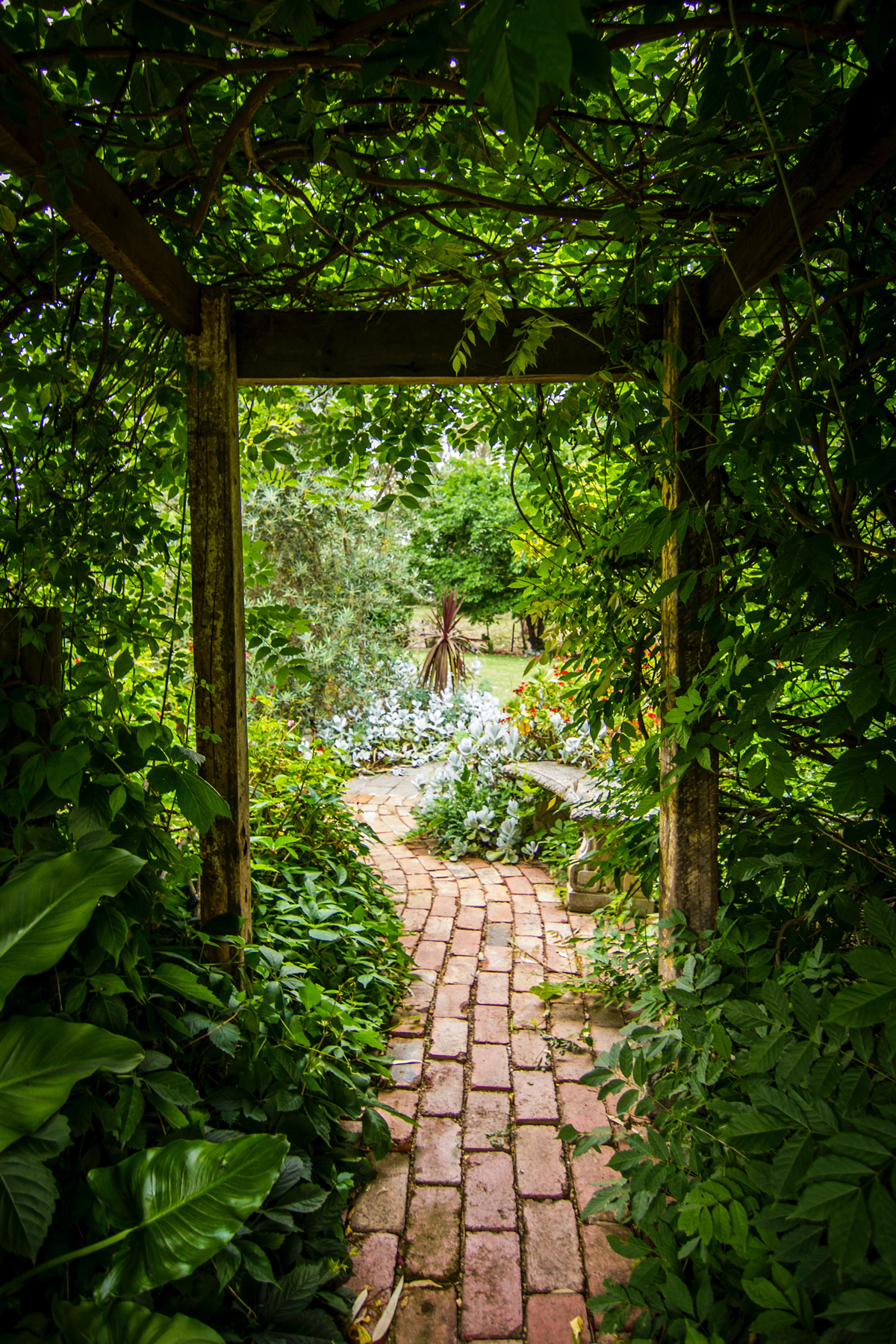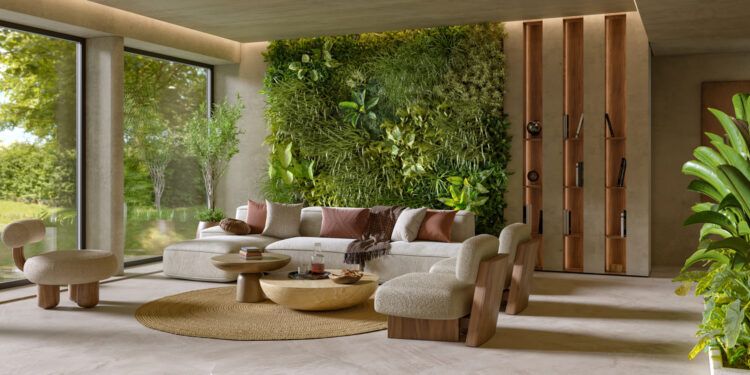When design goes beyond what the eyes can see.
It’s relatively easy to conjure up images of great design in your mind’s eye…but what if you want to do more than see? What if you want to feel the earth and stone beneath your feet, hear the sounds of the environment, smell the smells of your backyard patio, and hear the wind and the chimes beyond your door? This is what is known as sensory design—designing for all of the senses.
Not only is this an artistic, grounded, and holistic way to design landscapes and interiors, it’s also highly inclusive. And when we look at historical references for sensory design, we find an entire world of aesthetic interpretations that go far beyond our sense of sight and enhance lives in ways we didn’t even know existed. Sensory design also plays an important role in product design, transportation, food and beverage, and architecture.

WHAT IS SENSORY DESIGN?
From koi ponds and bird feeders, to labyrinths and fire pits, fans, chimes, and herb gardens, the list of ways to involve sensory experience in your home is limited only by the imagination. If you’ve never walked barefoot on a flagstone path, you haven’t lived. Run your hands along a heavily textured, mossy rock garden wall, and you’ll truly know the boundaries of your home space. Drinking coffee or meditating on a bench next to a small garden pond could add a level of enjoyment to your day and change your entire life. And if you have someone with a disability in your home, whether that means they use a wheelchair or have a sensory impairment, this is your chance to make their life better, too.
DESIGN AS ART (but please touch)
According to The Senses: Design Beyond Vision, “Multisensory design can solve problems and enhance life for everyone, including those with sensory disabilities. Sensory design activates touch, sound, smell, taste, and the wisdom of the body.” The Senses was published alongside a major exhibition at the Cooper Hewitt, Smithsonian Design Museum—the only museum in the United States devoted exclusively to historical and contemporary design.
These curators emphasize that the study of sensory design is critical for anyone working in the fields of product design, interior design, graphic and interactive design, sound, animation, data visualization, and “anyone seeking the widest possible understanding of design.”

“Sensory design supports everyone’s opportunity to receive information, explore the world, and experience joy, wonder, and social connections, regardless of our sensory abilities,” say the curators. “The senses mix with memory. From infancy, human creatures engage in countless acts of lifting, licking, touching, sniffing, throwing, dropping, hearing, balancing, and more, constantly testing the edges of physics to understand or make sense of the world we were born to discover.”
In other words, sensory design in our home connects us to a living, breathing, changing environment that is different for every person. It merges the senses in a way that sight alone cannot. Temperature, sound made by movement, surfaces under our feet and bodies, touch, and taste all affect our neural pathways.

ArchDaily magazine explains that a space that considers all of the senses can trigger feelings such as coziness and warmth, cleanness and comfort. “In addition to room temperature, the texture of wood and warm colors can provide an extra sense of comfort. While concrete is perceived as a cold material, you can counteract this impression by adding plants, contrasting colors, and other elements to the environment. There are endless possibilities.”
FOLLOWING THE RHYTHMS OF LIFE
No matter whether you experience life with all of your senses, or if you face some kind of sensory deprivation or condition such as SPD (sensory processing disorder), ASMR (autonomous sensory meridian response), or PTSD (post-traumatic stress disorder), sensory design can calm the nervous system and put us back in touch with the natural biorhythms of life.

This includes our circadian rhythm, which is connected to our “biological clock,” according to architect and urbanist Eduardo Souza. Souza says that understanding the role of light in design is crucial for this matter, including carefully planned natural light, use of color, focal points, and artificial lighting. Experts say light in our environment affects everything from mood and energy levels to appetite, ability to focus, creativity, and sleep. With all of the advances in LED lighting technology, there’s no reason not to take your lighting design seriously.
What other areas of your home and outdoor spaces could you incorporate sensory design? A home gym, a back patio, sitting areas, kitchen…what small changes could you make to improve your daily patterns and begin to experience the world around you in new ways? We can’t wait to experience what you create.

~ We shared this story with you in the Summer 2023 issue of NEST Magazine. To subscribe to NEST Magazine, click here — and be sure to follow us on Instagram @NestRealty
